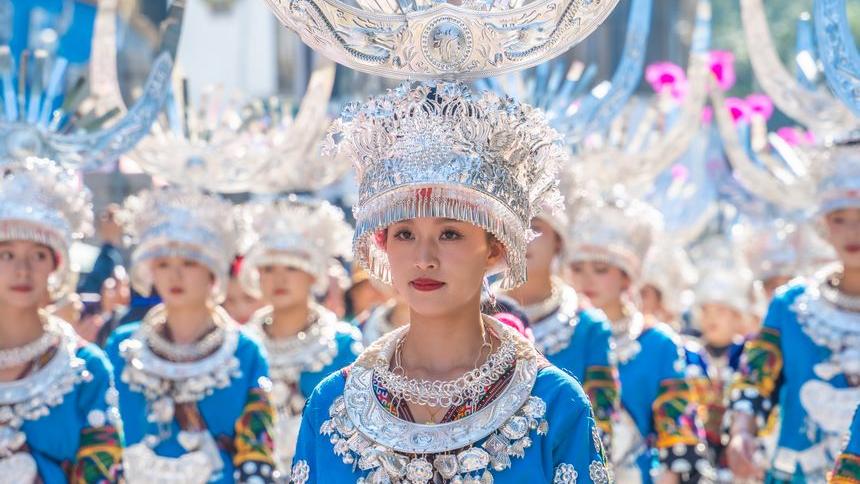Well-preserved ankylosaur fossil identified as new dinosaur species
KUNMING, Nov. 19 (Xinhua) -- A Late Cretaceous dinosaur specimen unearthed almost four decades ago in east China's Jiangxi Province has recently been identified as a new species of ankylosaur named Huaxiazhoulong shouwen.
The finding has been published in the international journal Historical Biology.
"The discovery of Huaxiazhoulong shouwen adds to the diversity of species of ankylosaurs which existed in Late Cretaceous southeast China," according to Xu Xing, the research team leader and academician of the Chinese Academy of Sciences (CAS).
The fossil was spotted in 1986 by a villager in Guangchang County of Jiangxi Province, prompting the local government to launch a rescue excavation. Due to its large size and relatively intact structure, the fossil was hailed as "China's best" ankylosaur fossil at that time and was referred to as Guangchang ankylosaur after the place where it was found.
Jiangxi Provincial Museum, where the fossil was housed, collaborated with the Center for Vertebrate Evolutionary Biology at Yunnan University's School of Life Sciences in 2023 to unravel the mysteries surrounding this fossil.
Reconstruction efforts revealed that Huaxiazhoulong shouwen had a body length exceeding six meters. This species lived during the Late Cretaceous period of approximately 72 to 84 million years ago, and primarily fed on low-growing ferns, seeds and leaves.
These dinosaurs had robust bodies, powerful limbs and tail clubs characteristic of dinosaurs of the Ankylosauridae clade.
In order to protect themselves, such dinosaurs struck threats by swinging their tails. At the end of their tails, they developed a bony tail club, similar in size to a pomelo. With the powerful muscles in their tails, the tail club could strike with considerable force, according to Zhu Ziheng, a doctoral student and member of the research team.
"Despite being herbivorous dinosaurs, Huaxiazhoulong shouwen were able to scare away predators," Zhu said.
The name Huaxiazhoulong shouwen consists of a generic name and a specific name, according to the paper published in Historical Biology. The generic name Huaxia means China, while zhou means armor and long means dragon in Chinese. The specific name, shouwen, refers to "beast patterns" found on a cultural relic housed in the Jiangxi Provincial Museum.
China's systematic and professional dinosaur research tradition began when the skeleton of Lufengosaurus huenei, a herbivorous dinosaur that existed in the Early Jurassic period, was excavated in southwest China in 1938.
Today, China ranks top across the world in terms of the number of dinosaur species discovered in the country, said Zhao Qi, a researcher at the Institute of Vertebrate Paleontology and Paleoanthropology of the CAS, while adding that out of the more than 1,000 species of dinosaurs discovered across the world, over 300 were discovered by Chinese scientists.
Photos
Related Stories
- World's smallest dinosaur egg fossils discovered in China
- Turtle, bird, dinosaur tracks reveal NW China's Cretaceous past
- Small dinosaur footprints found in northwest China
- Over 400 Cretaceous dinosaur footprint fossils discovered in SW China
- Fossilized teeth provide new insights into dinosaurs in south China
Copyright © 2024 People's Daily Online. All Rights Reserved.









